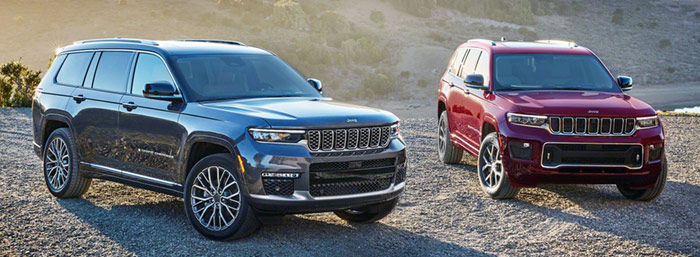Weeks ago, Jeep announced changes to the Grand Cherokee lineup for 2023; the biggest was pairing the 4xe plugin hybrid setup with the Grand Cherokee Trailhawk. The 4xe provides the power of a V8 (375 hp, 470 lb-ft) with the fuel economy of a four-cylinder (56 MPGe, with 25 miles of all-electric range). The main reason for this was probably the 4xe’s torque, which is higher than that of the Hemi.

In Canada, the same restriction applies: the V6 is standard on every model, Laredo to Summit, and the Hemi is optional on Overland and Summit. The 4xe is being reported as a separate model, the Grand Cherokee 4xe. Canadians do not appear to get a Trailhawk model at all; however, there is an off-road group for the Grand Cherokee L Overland 4×4 which has Trail Rated performance.
As in the US, UConnect 5 with navigation and a 10-inch screen will be standard on the Limited and Overland; the nine-speaker Alpine audio setup will be a standalone option on Limited, while the 19-speaker McIntosh audio will be a standalone option on Overland and Summit. These changes are common to Grand Cherokee and Grand Cherokee L.